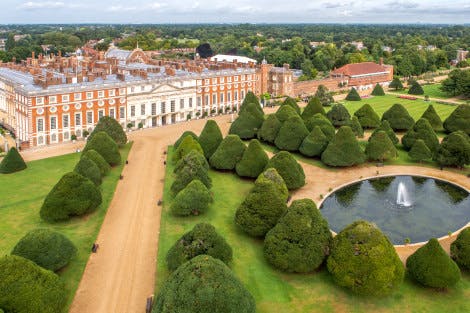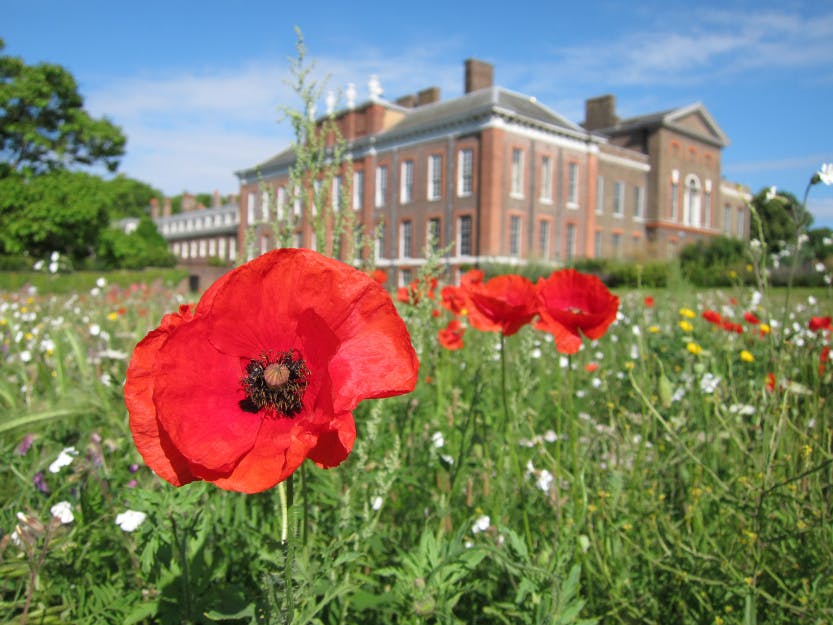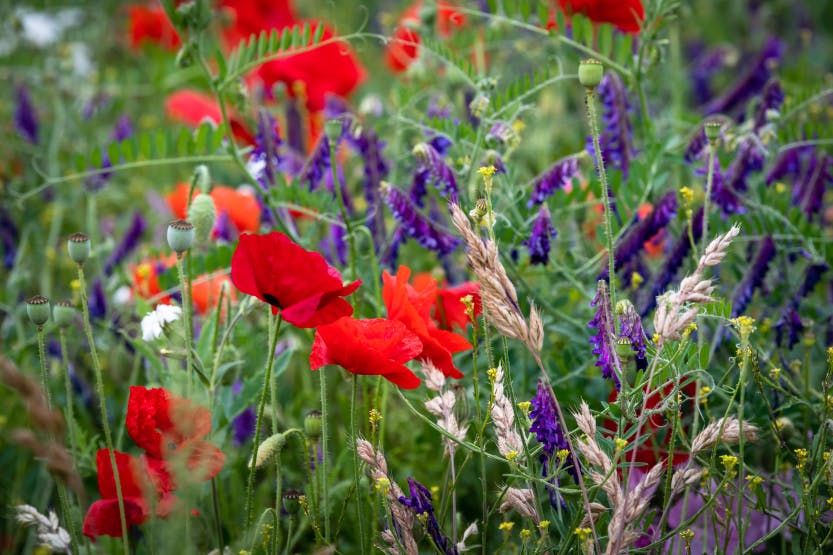Creating your own wildflower garden
Date: 27 April 2020
Author:
Gregory Leeson
You don't need large expanses of land to make your own wildflower meadow providing cover and food for wildlife. Following the success of our wildflowers at Kensington Palace, this year we planted a new wildflower meadow at Hampton Court, sandwiched between the Privy Garden and The Old Pond Garden on the south front of the palace. You too can do the same with any old patch of lawn in an open, sunny position. It can be transformed into a meadow, rich in wildflowers.
The maintenance of a wildflower meadow is so much easier than a traditional lawn - as it will be low maintenance and provide colour and interest from spring until it begins to die back down in the autumn.
The most successful meadows occur on nutrient-poor soils. Before growing your meadow, stop using fertilizers and weed-killers, and keep the grass really short and remove all the clippings. This prevents any nutrients from returning to the soil. Scarify the surface as well to get rid of as much of the original lawn as possible. This will make germination and establishment of the meadow that much easier.
Wildflower turf or seed?
If you want to create a wild flower meadow - you can take a short cut and lay wildflower turf. It is supplied in rolls and can be laid like regular turf. Depending on the supplier it can contain 50% grasses and 50% native wildflowers. You can buy this from a number of specialist suppliers on line and they will deliver to your door too.
Alternatively, you can sow a wildflower meadow mix of seeds direct onto the area of lawn either in autumn or early spring. The sowing rate is usually given by the supplier, but generally sow at a rate of 4 grams per square metre. Before sowing, fork over the soil and rake it, and then scatter the seed throughout. Lightly firm the soil with the back of the rake and keep an eye on the watering until germination has taken place.
The other way - which is what we did - is to buy in bulk bags of 'impregnated soil'. Which has the seed already mixed into the loam-based compost and you can then spread it over the area you want to establish as a meadow. Undertake this in spring - around March/April and if dry, make sure you keep it well watered until it has established and is growing away.
Good mixes include:
- birds-foot trefoil (important for common blue butterfly caterpillars)
- common sorrel (important for small copper butterfly caterpillars)
- cowslip
- field scabious
- hoary plantain
- greater and common knapweed
- lady's bedstraw
- meadow buttercup
- ox-eye daisy
- red clover
- ribwort plantain
- wild carrot
- yarrow
Don't forget to include in this mix a range of wild grasses, such as bents, fescues and crested dogs' tail (but watch out not to include lawn grasses!)
Your meadow will evolve year by year, with some species coming through strongly to start with and then others taking over. You should see bees and butterflies, birds should feed there and bats may visit as well. It could become one of the most interesting oases' in your garden. For us, it will be a beautiful contrast to the pomp, pageantry and drama of our formal gardens, as well as a great space for wildlife to thrive. The meadow at Hampton Court will come into bloom around summer time - if we aren't able to witness this year's flowers, it's good to know that the wildlife will enjoy it, and it will be back in time for next summer too.
Gregory Leeson
Horticulture Manager
More from our blog

Mistletoe in the Hampton Court Palace Gardens
20 December 2019
One of the most popular questions posed to our gardeners during winter concerns strange lumps of weed growing in trees in the East Front garden. These random and odd-looking growths are in fact clumps of mistletoe.

Royal Trees at Hillsborough Castle and Gardens
31 May 2023
Claire Woods, Gardens Manager at Hillsborough Castle and Gardens, reflects on some of the trees planted by members of the Royal Family, which are still available to view in the castle grounds today, and the newest addition for 2023.

Sir Christopher Wren's Hampton Court Palace
08 March 2023
Head of Historic Buildings Daniel Jackson looks at one of Sir Christopher Wren's most famous and problematic projects: the remodelling of Hampton Court Palace.


